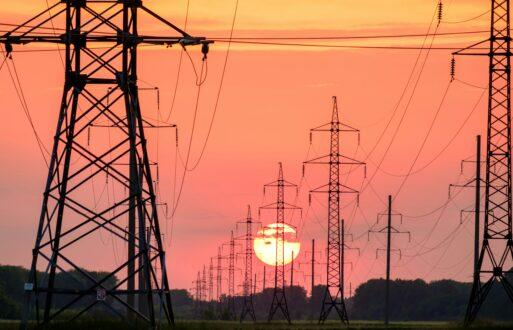Disclaimer: This blog post, which answers “Explain bid cost recovery (BCR) in organized electricity markets,” was generated using PCI’s ISO/RTO Documentation AI Chatbot, powered by ChatGPT. While the content is based on curated market documentation, it is intended for informational purposes only and may not reflect the most up-to-date or comprehensive information. We recommend verifying any key details directly with relevant sources before making business decisions.
For the latest answer to this question, generated live, visit our free ISO/RTO Documentation Chatbot.
In the world of organized electricity markets, bid cost recovery (BCR) plays a crucial role in ensuring financial fairness for market participants. BCR is a mechanism that allows generators and other eligible resources to recover costs when market revenues fall short of covering their operational expenses. Without it, generators might hesitate to participate in markets, especially during periods of low demand or volatile pricing.
Imagine a scenario where a power plant is dispatched to meet real-time energy needs, but the revenue it earns from the market doesn’t cover its start-up costs or minimum load costs. That’s where BCR steps in, ensuring the generator isn’t left at a financial loss. This mechanism not only supports generators but also ensures grid reliability by incentivizing participation.
In this blog post, we’ll explore what BCR is, why it’s essential, and how it impacts market participants financially. We’ll also dive into examples of when BCR payments are triggered, how these payments are funded, and what they mean for both generators and load-serving entities.
ISO/RTO Documentation Chatbot
Use our AI to search Business Practice Manuals from ISO/RTO markets at no cost.
What is bid cost recovery?
At its core, bid cost recovery is a financial safety net for generators and other eligible resources in organized electricity markets. It ensures that when a resource is dispatched by the market operator, it can recover its operational costs — even if market revenues fall short. These costs can include start-up costs, minimum load costs, energy bid costs, and other expenses like transition costs for multi-stage generating resources.
For example, in the California Independent System Operator (CAISO) market, BCR applies to resources like generating units, pumped-storage units, and proxy demand resources. If these resources are dispatched but don’t earn enough revenue to cover their costs, they’re eligible for BCR payments to make up the shortfall.
Why does bid cost recovery exist?
Electricity markets are designed to balance supply and demand in real time, but they don’t always guarantee that generators will recover their costs. This is especially true during periods of low market prices or when resources are dispatched for reliability reasons rather than economic ones.
Without BCR, generators might be reluctant to participate in the market, particularly during times when their costs exceed potential revenues. This could lead to reliability issues, as fewer resources would be available to meet demand. BCR ensures that generators are fairly compensated, encouraging them to remain available and helping maintain grid stability.
How bid cost recovery impacts market participants
BCR has financial implications for both generators and load-serving entities (LSEs).
For generators: BCR provides a safety net, ensuring they can recover their costs even when market conditions are unfavorable. This reduces financial risk and encourages participation in the market, which is critical for maintaining a reliable electricity supply.
For load-serving entities: BCR payments are typically funded through uplift charges, which are allocated to LSEs based on their share of market activity. While this ensures generators are compensated, it can increase costs for LSEs and, ultimately, end consumers.
When are BCR payments triggered?
BCR payments are triggered when a resource’s market revenues don’t cover its eligible costs. Here are a few examples:
- Real-time energy dispatch: If a generator is dispatched in the real-time market but its revenues don’t cover its start-up or minimum load costs, it’s eligible for BCR payments.
- Day-ahead market shortfalls: In the Extended Day-Ahead Market (EDAM), if a resource’s day-ahead revenues don’t exceed its daily commitment costs, it can recover the shortfall through BCR.
- Reliability commitments: When resources are committed for reliability reasons, such as during a capacity shortfall, they may not earn enough revenue to cover their costs. BCR ensures they’re compensated for the difference.
How CAISO allocates these charges
In CAISO, BCR payments are funded through uplift charges, which are allocated to market participants based on their share of market activity. For example:
- Load-serving entities: These entities bear a portion of the costs based on their load share.
- Exporters and importers: Participants engaging in intertie transactions may also contribute to uplift charges.
This allocation ensures that the costs of maintaining grid reliability are shared among all market participants.
The broader implications of BCR
BCR is more than just a financial mechanism — it’s a cornerstone of market reliability. By ensuring generators can recover their costs, BCR incentivizes participation and helps maintain a stable electricity supply. However, it also raises questions about cost allocation and fairness, as LSEs and consumers ultimately bear the financial burden.
For market participants, understanding BCR is essential for navigating the complexities of organized electricity markets. Whether you’re a generator seeking to recover costs or an LSE managing uplift charges, BCR plays a critical role in shaping your financial outcomes.
Why bid cost recovery matters for the future of electricity markets
As electricity markets evolve, BCR will remain a vital tool for ensuring reliability and fairness. With the growth of renewable energy and the increasing complexity of market operations, mechanisms like BCR will be essential for balancing the needs of generators, LSEs, and consumers.
By understanding how BCR works and its implications, market participants can better navigate the challenges of today’s electricity markets — and prepare for the opportunities of tomorrow.
For the latest answer to this question, generated live, visit our free ISO/RTO Documentation Chatbot.







